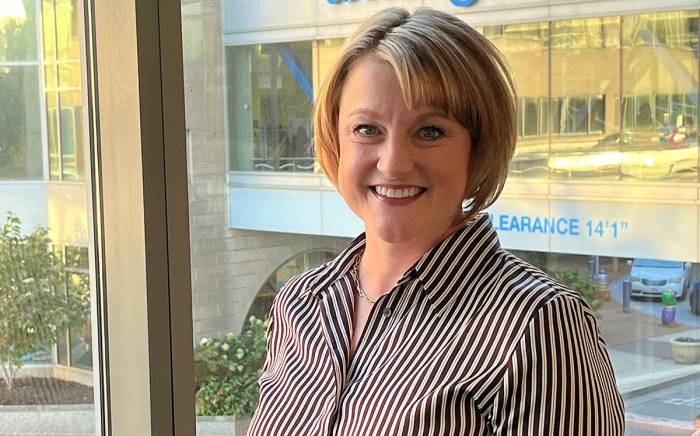What is ECMO?
ECMO stands for Extra Corporeal Membrane Oxygenation. Extracorporeal means ‘outside the body.’ The ECMO procedure is similar to heart-lung bypass used during open-heart surgery. ECMO is a temporary artificial heart and lung for your child.
Who needs ECMO?
Your child has a heart and/or lung condition that needs additional support achieved through an ECMO machine. Infants and children who do not respond to traditional therapy can be at risk, but ECMO can be successful when used to treat your child whose disease is thought to be reversible by either medical or surgical treatment.
Who will be taking care of my child while on ECMO?
Your child needs specialized care that will be provided by a variety of people. These include the critical care physicians, surgeons, ECMO specialists, perfusionists, respiratory therapists and physical therapist.
How will my child be placed on ECMO?
ECMO is established by the surgical placement of large IV-like catheters (cannula) into blood vessels called veins and arteries. These cannula are inserted during a short operation performed at your child’s bedside by a team of surgeons. A medical team of ICU (intensive care unit) physicians, nurses and respiratory therapist closely monitor your child during the procedure and make sure that your child is comfortable with necessary medications.
How does ECMO work?
Depending on your child’s age, size, and reason for needing ECMO, the cannula will be placed in either his/her neck, chest, or groin. These cannula will allow blood to drain from your child, get oxygenated and then be returned to your child.
The ECMO machine consists primarily of a pump (artificial heart), and a membrane (artificial lung), with a blood warmer. The machine continuously removes venous blood (low oxygen content) from your child and pumps it through the membrane where it receives oxygen. The blood is warmed and returned to your child’s arterial circulation so his/her body can use it to help the child recover.
This process goes on continuously while your child is on ECMO. Your child will also stay on a ventilator while on ECMO.
What are the risks for my child on ECMO?
A child that requires ECMO can be critically ill. ECMO can be a life-saving treatment, however, it is important that you understand these possible risks.
To prevent blood in the ECMO circuit from clotting, we use a blood thinning medicine called Heparin. The thinned blood can lead to problems — for example, bleeding at the site of the cannula or any skin puncture or operation site. Neurological problems (problems involving the brain) can rarely occur due to bleeding. Your child will be routinely monitored by pediatric radiologists and neurologists, if necessary, for such complications.
Whenever a tube is inserted into a blood vessel there is an increased risk of infection. Signs of infection are watched for carefully by the ICU team and antibiotics are given to reduce the chance of infection.
Mechanical complications with the ECMO circuit or pump are also possible. There is risk of blood loss or introduction of air into the circuit. These malfunctions are rare, but if they occur the ICU team is trained to manage all ECMO-related emergencies and actions will be taken to ensure the mechanical complication is corrected.
How long will my child be on ECMO?
It is difficult to project the length of need for ECMO support. ECMO is generally continued until the underlying heart or lung problem is improved or resolved. The typical course is around 5 days, but in some cases, ECMO support has continued for up to/past 30 days. Long-term ECMO support increases the chances of complications.
Is ECMO painful?
ECMO support is not painful. The cannula sites and needed immobility can be uncomfortable. Your child will receive pain and sleeping (sedation) medication to help keep him/her comfortable while on ECMO support. In some cases your child may require temporary muscle relaxation with medications known as paralytics. Paralytic medications are only used when it is determined that your child needs to be completely still for safety reasons or during medical procedures.
What can I do for my child while on ECMO?
You will be able to visit, touch and talk to your child while he/she is on ECMO support. Your child will require rest, but there may be times when reading a story, playing music, or just talking to your child may be very helpful. Talk to your child’s nurses and physicians about ways you can help.
How will my child receive nutrition while on ECMO?
While on ECMO your child may be fed breast milk and/or formula through a tube that enters his/her nose or mouth and empties into the stomach. If your child does not absorb the food properly then he or she will be fed nutrition through IV fluids into his/her veins.
How will my child be taken off ECMO support?
When it is determined by the ICU team that your child’s heart and/or lungs are able to function without ECMO support, ECMO support will be reduced on a gradual scale (ECMO wean). As the ECMO support is decreased, your child will continue to be monitored closely to assure he/she is tolerating the wean.
ECMO support can be stopped entirely by clamping the tubings, which will stop blood flow from the ECMO circuit. If your child tolerates this, the cannula will then be surgically removed at your child’s bedside by a team of surgeons. After ECMO support is stopped, your child will still require the assistance of a ventilator and medications as he/she continues to recover.
What if I have questions?
At any time you can talk with your critical care physicians, surgeons and nurses to have all your questions answered. The critical care team has bedside rounds every day to discuss the plan of care, and you are encouraged to participate.
For more information on the ECMO Program at St. Louis Children's Hospital, call 314.454.5437.










